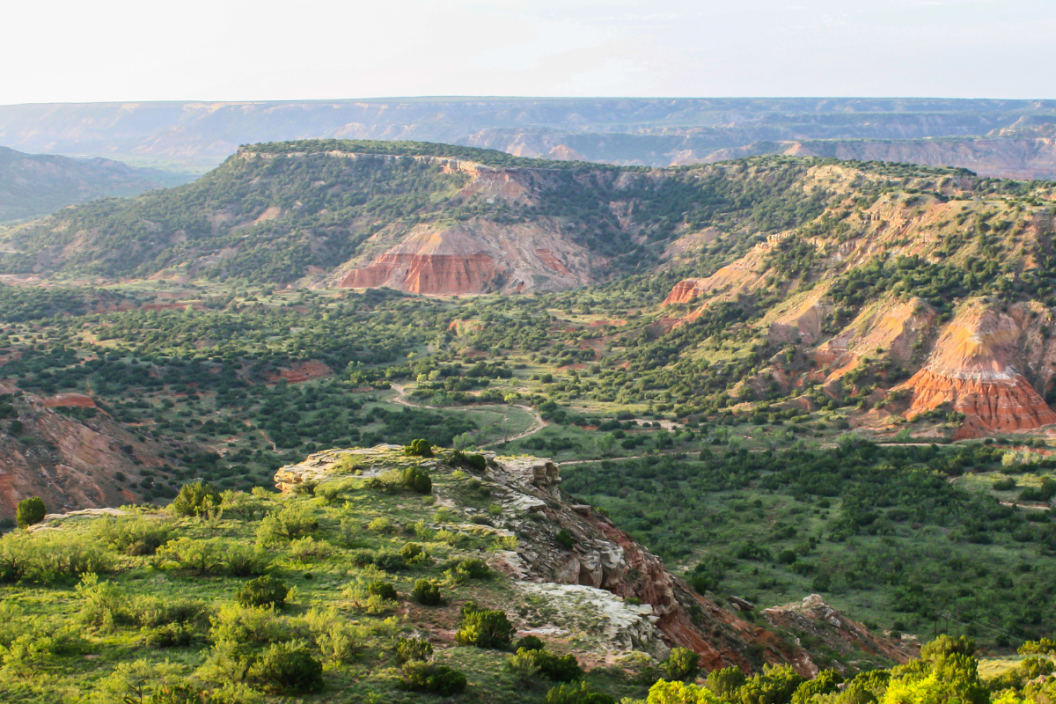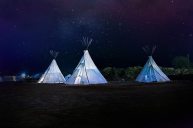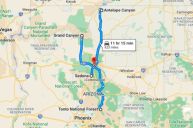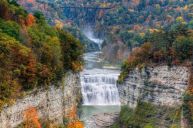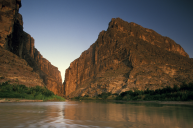Deep in the heart of the Texas Panhandle lies the second-largest canyon in the country and a Texas State Park to match — Palo Duro Canyon State Park. This State Park is located near Amarillo, Lubbock, and Canyon and offers a rugged and colorful history. Suppose you are driving through the Lone Star State. In that case, it is highly recommended that you make a stop at this magical masterpiece of Mother Nature.
Palo Duro State Park boasts remarkable views, as well as 30 miles of hiking, mountain biking, and horseback riding trails. Crowd favorites include the Lighthouse Trail and attending the Texas Outdoor Musical at the Pioneer Amphitheater, which takes place every summer.
History of Palo Duro Canyon
Indigenous people have lived in Palo Duro Canyon for approximately 12,00 years, including the Clovis and Folsom people, followed by Native American tribes of the Apache, Kiowa, and Comanche. Archeologists and historians have found rock art, bedrock mortars, and evidence of mesquite beans and roots used for sustenance. Spanish colonizers came in and "discovered" the canyon, calling it "Palo Duro" for "hardwood."
After the Red River War between the Native Tribes and the U.S. Army, former Texas Ranger Charles Goodnight drove 1,600 Longhorn cattle to the canyon and found the JA Ranch in 1877. Decades later, Texas bought the land from Fred S. Emory, and the Civilian Conservation Corps (CCC) worked for 5 years creating the modern-day Palo Duro Canyon State Park.
What To Do at Palo Duro Canyon State Park
RELATED: See 10,000 Years of History at Seminole Canyon State Park
When visiting the Grand Canyon of Texas, there are endless ways to explore and enjoy time outdoors. 30 miles of trails are perfect for hiking, biking, and horseback riding. In the summer months, you can even catch a heart-warming TEXAS Outdoor Musical at the outdoor amphitheater!
The park map features 16 trails, some just hiking trails, some for mountain bikes, and others for mix-used access. The lighthouse, the park symbol, is the famous rock formation that you have probably seen in pictures on social media. Take the 2.8-mile (one way) Lighthouse Trail to snap your own photo of this iconic rock.
Equestrians looking to ride their horses will delight in the 1,500 acres to ride through. Bring your own horse to tie up at the equestrian campgrounds (bring your own water) OR take a guided tour from the Old West Stables on the canyon floor of the park. Reservations are required, and you can call (806) 488-2180 to inquire for more information.
Camping Options
Campers looking to stay the night at this west Texas park will find a wide array of options to choose from, including campsite with hookups, primary tent sites, equestrian sites, and backcountry areas for backpacking. There are even three cabins on the Canyon Rim and four Cow Camp Cabins on the canyon floor. For weddings and large gatherings, you can rent one of the park's pavilions.
A brand-new feature at the park includes the option for camping in style — also known as glamping! Each glamping site offers air-conditioning, rustic yet modern furnishings, a kitchenette, bicycles, a gas grill, picnic tables, a porch with rockers, and other exciting amenities.
Important Info for Visitors
Managed by Texas Parks and Wildlife, the Visitor Center on the canyon rim is where you can stop to learn more about the park and ask rangers any questions you may have about your visit. There is also a park store that sells local jewelry and art. Additionally, you will find The Trading Post on the canyon floor, which has snacks and more souvenirs for purchase.
The park is open year-round but usually reaches capacity. It is highly encouraged to make reservations online for camping and day-use passes. The address of the park is 11450 Park Road 5, Canyon, TX 79015. If you are in the area, be sure to also check out Caprock Canyons State Park & Trailway.
Have you visited the Grand Canyon? Share your trip on our Wide Open Roads Facebook!
